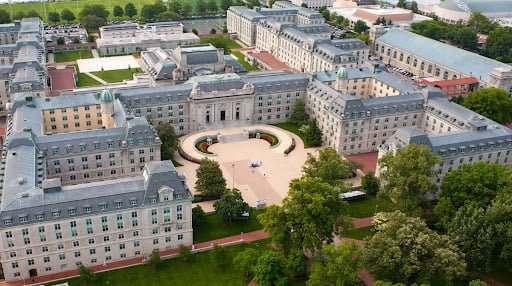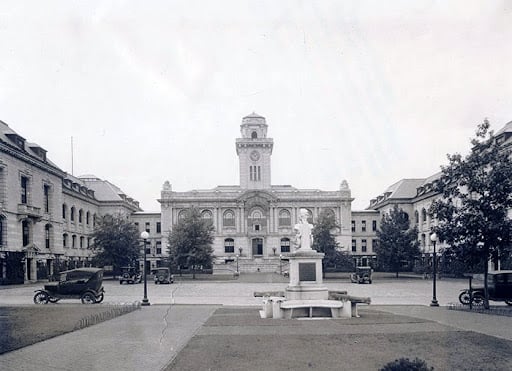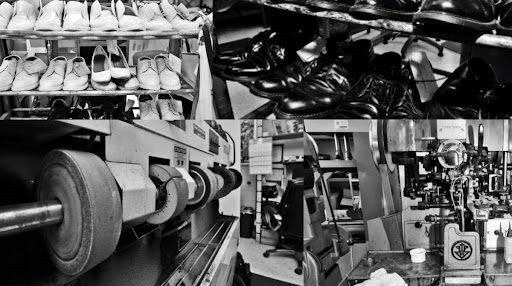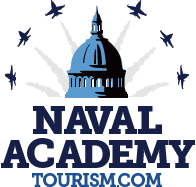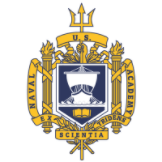As the weather warms up, grab a friend or two and head on over to the Yard. Join the fun of this historical scavenger hunt. While scavenging for clues, this “wild Bill the Goat” chase will take you through the Yard uncovering plenty of Naval Academy history and making interesting discoveries along the way!
Bancroft Hall’s Hidden Treasures
Once you enter the Yard through the Visitor Center, head to Bancroft Hall, the mother of all dorms, affectionately called “Mother B.” When you walk inside, you’ll be greeted by an incredible rotunda and a sweeping staircase leading up to Memorial Hall. See if you can pick out the “catacombs,” a number of secret rooms allegedly used by early administrators to mete out any punishments for the honor offenses of lying, stealing, and cheating. To help you find them, think of this legendary story: these same rooms were ironically used by midshipmen to mete out a different kind of punishment. They dropped bags of flour on unsuspecting guests in the Rotunda from the same spots. Now can you see them?
If you ascend the stairs to Memorial Hall, look to your right for an exquisite example of stained glass. This “Hurricane Window” memorializes American Navy personnel that were lost in an 1889 hurricane in Samoa. It is one of the few remaining pieces left from one of the two Yard chapels that are no longer standing.
Once you enter Memorial Hall, take a moment to feel its hushed sacredness and remember those lost in service to our country. The last highlighted treasure of Bancroft Hall is not hidden at all. In fact, they’re the centerpieces to this incredible space, the 16-foot-tall Rambusch Chandeliers. Originally installed in 1964, they are a dazzling sight with 20,000 sparkling crystals that illuminate and honor the historic relics in this awe-inspiring space. In 2003, the chandeliers were rewired with fiber optics that can now light up the room with 124 different ambient shades setting a new mood every time they are aglow. Begin your USNA historical education in this great room. Spend some time exploring the artwork, busts, plaques, and sculptures filling Memorial Hall. Discover the breadth of all Mother B offers while embracing and honoring the memories from the past.
The USNA Main Chapel’s Hidden Treasures
Add to your fill of the fascinating artifacts commemorating important naval history and celebrating those who served by venturing to the USNA Chapel. See if you can find the cornerstone of the chapel, laid on June 3, 1904. Inside the cornerstone is a real time capsule, with copies of the Naval Academy regulations, admissions policies, the Evening Capital, the Baltimore Sun, autographed photos of President Roosevelt and Secretary of the Navy William H. Moody, and more.
Then take a closer look at the gargantuan 22-foot bronze doors leading inside. The panels represent “Invention” in the form of a young sailor with a torpedo, and “Science” as an elderly professor—melding the two important studies of science and engineering that anchor the Academy. These doors were created by Evelyn Beatrice Longman as part of a design competition by the National Sculpture Society. Her anonymous design won, but when she was revealed to be a 28 year-old woman, some of the men on the selection committee tried to change their votes. They were overruled by Robert Means Thompson, Class of 1868, who was donating the doors as a memorial to his class. These impressive doors were dedicated in 1909.
If you enter the sacred space of the chapel, be sure to remove any hats and respect the quiet of this place. Once you’ve enjoyed the chapel’s gorgeous interior, come back outside and cross the street to the Zimmerman Bandstand. See if you can locate the Freedom Tree, so named because it was dedicated to all USNA POWs and MIAs in 1973. It’s a tulip poplar right behind the bandstand.
The Quadrangle’s Hidden Treasures
Follow the path directly in front of you towards the center of the Quadrangle. You’ll head straight towards the Mexican War Monument with its obelisk and guarding cannons at the center of Stribling Walk. Originally called the “Midshipmen’s Monument,” it’s dedicated to the memory of four midshipmen who were killed in the Mexican War, before the Academy was founded in Annapolis. It was paid for by midshipmen attending the fledgling school, who raised over $1,000 from 1847-1848 because they had a strong connection to the war. Thirty percent of the midshipmen attending the Academy from 1845-1848 had served on ships that saw duty on the blockades or in the landings of Vera Cruz, and knew these men or fought with them. See if you can locate the “El Neptuno” plaque.
From there, you can look towards the Severn River and find a small sundial that measures both time and direction. Designed by Robert S. Owendoff from the Class of 1968, this self-orienting sundial was installed there that same year.
If you walk over to Mahan Hall, you’ll find the oldest object on the Yard that was also part of the original Academy. Another important cornerstone, the marble tablet that’s part of Mahan’s balustrade, was installed at the Hall around 1907. The old Recitation Hall (where Tamanend Court now stands) once housed this tablet in an interior wall. The inscription reads, “Naval School. Founded October 10th, 1845, James K. Polk, President of the U. States, GEO. Bancroft, Secretary of the Navy.”
If you’ve found these objects, share them with us on Facebook or Instagram. This is just scraping the surface of the treasures you can uncover on the Yard. Come take a tour with us and discover even more!
-1.png)

